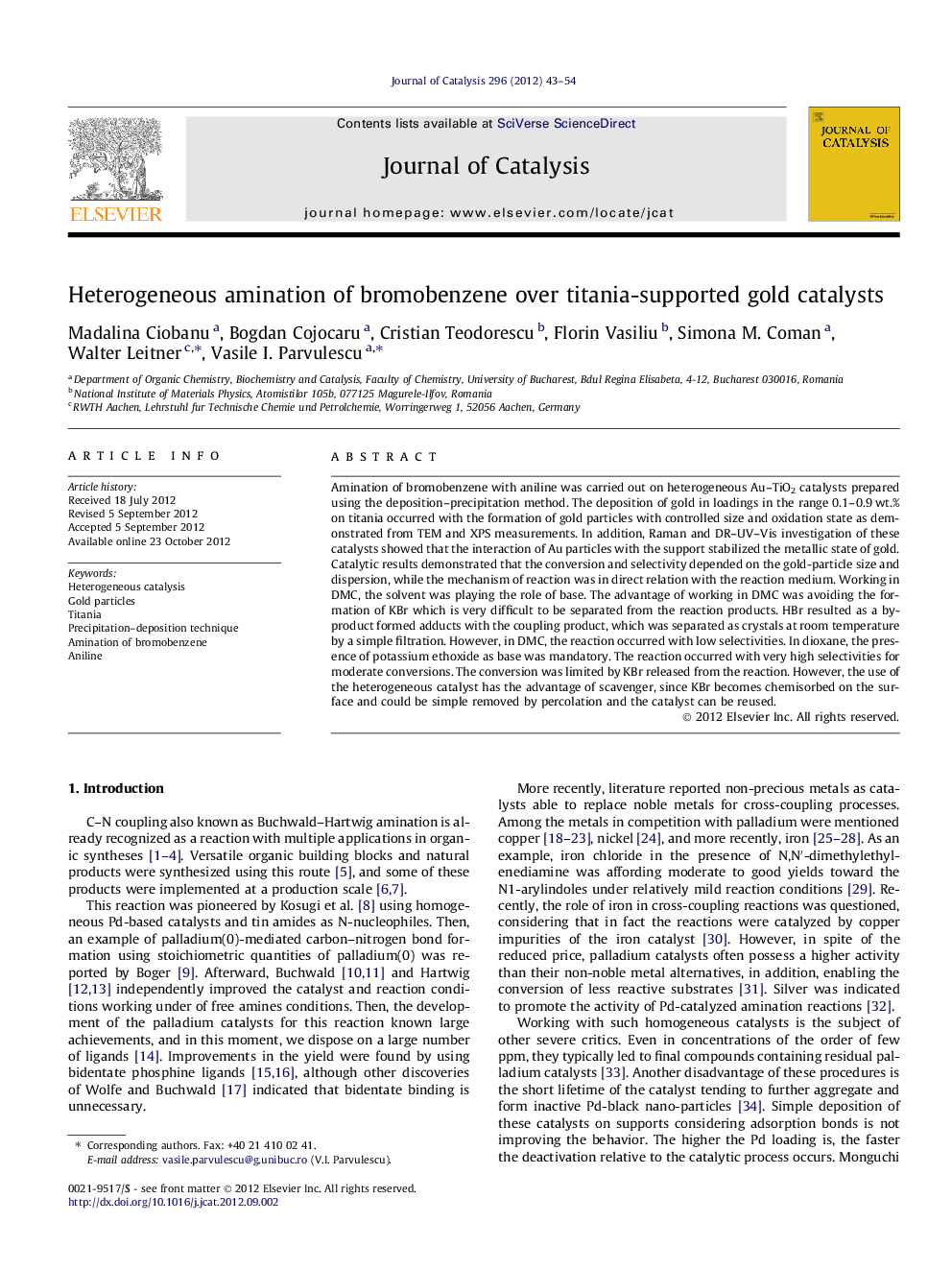| Article ID | Journal | Published Year | Pages | File Type |
|---|---|---|---|---|
| 61330 | Journal of Catalysis | 2012 | 12 Pages |
Amination of bromobenzene with aniline was carried out on heterogeneous Au–TiO2 catalysts prepared using the deposition–precipitation method. The deposition of gold in loadings in the range 0.1–0.9 wt.% on titania occurred with the formation of gold particles with controlled size and oxidation state as demonstrated from TEM and XPS measurements. In addition, Raman and DR–UV–Vis investigation of these catalysts showed that the interaction of Au particles with the support stabilized the metallic state of gold. Catalytic results demonstrated that the conversion and selectivity depended on the gold-particle size and dispersion, while the mechanism of reaction was in direct relation with the reaction medium. Working in DMC, the solvent was playing the role of base. The advantage of working in DMC was avoiding the formation of KBr which is very difficult to be separated from the reaction products. HBr resulted as a by-product formed adducts with the coupling product, which was separated as crystals at room temperature by a simple filtration. However, in DMC, the reaction occurred with low selectivities. In dioxane, the presence of potassium ethoxide as base was mandatory. The reaction occurred with very high selectivities for moderate conversions. The conversion was limited by KBr released from the reaction. However, the use of the heterogeneous catalyst has the advantage of scavenger, since KBr becomes chemisorbed on the surface and could be simple removed by percolation and the catalyst can be reused.
Graphical abstractThe amination of bromobenzene with aniline carried out on heterogeneous Au–TiO2 catalysts brings the advantage of using a recyclable heterogeneous catalyst.Figure optionsDownload full-size imageDownload high-quality image (114 K)Download as PowerPoint slideHighlights► The amination of bromobenzene with aniline was carried out on Au–TiO2 catalysts. ► The reaction occurred with very high selectivities for moderate conversions. ► The mechanism of reaction was in direct relation with the reaction medium. ► The advantage of working in DMC was avoiding the formation of KBr. ► The advantage of using solid catalysts was the chemisorption of KBr on the surface.
